I was going to just lump my observations about my short visit to the Greek islands all into one post, but found that I had so much to say about Santorini that I will post my comments here.
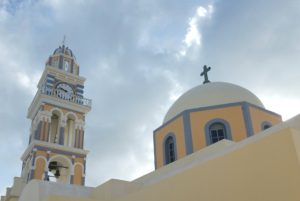
Actually, initial reaction to t. he Greek islands is that it is all about the weather.
But Santorini is an exception. The geography of the island is spectacular. Plus they have Akrotiri, one of the most important ongoing archeological sites in the western world.
From the east the island rises from the sea in a steady, familiar manner.
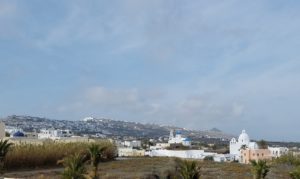
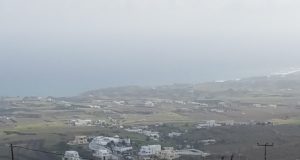
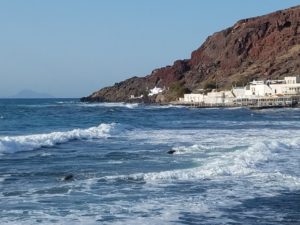
Medieval Greek villages inhabit the washes.

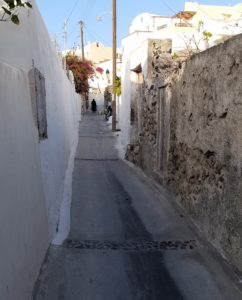
The main road into the biggest town Fira, is quiet and lined with gum trees and leads to a non-descript central square.
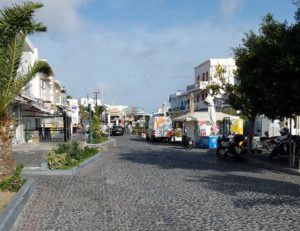
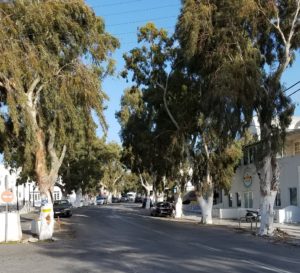
There are plenty of nice restaurants and tavernas. But it is off season when I am here in November and many hotels and restaurants and shops are closed. The center of Fira is tourist target dead center. Lots of arts and craft galleries and junk souvenir stores and bars. And stupid prices. I learn later that a lot of Asians, including bus-loads of mainland Chinese come here. Which explains the prices.
Anyway, as soon as you head west from the town center, you reach the edge. This is a really startling thing. From thinking you are in a little town, you are hanging on the edge of a cliff.
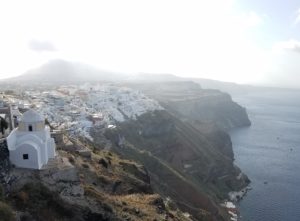
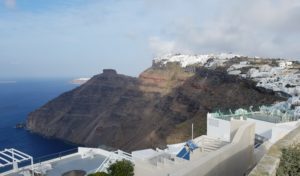
The city stops so abruptly at the cliff edge that approaching from afar I wondered how these mountains could be high enough to collect snow !!
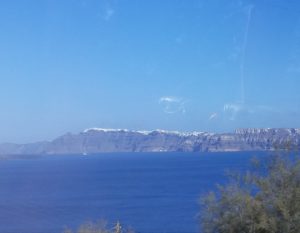
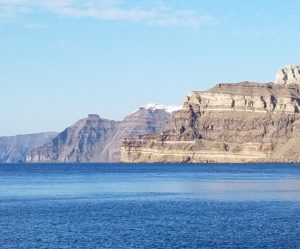
From the west of town you are looking out over a blown up volcano. It was enormous, and when it blew it was perhaps the biggest explosion within human history. Some say that the event was the genesis of Plato’s story of Atlantis.
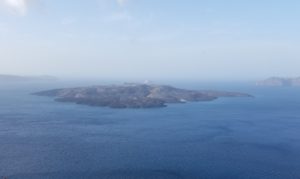
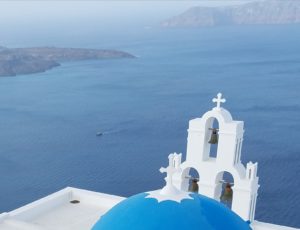
Akrotiri.
The time scale of the town being excavated out of the ashes here on Santorini is difficult to comprehend. A Neolithic settlement from 6000 years ago, a settlement from the Minoan civilization centered in Crete. On a clear day you can see Crete from here.
By 4000 years ago having been rebuilt at least twice from volcanic eruptions, the town is a wealthy bronze age era port trading around the Mediterranean. That is about when the island blows up. The city is covered with ash and flooded with mud. The huge explosion brings about the end of the Minoan civilization. The remainder merges with the early Greeks.
I would ask you to look back at those two paragraphs and think about the expanse of time we are talking about. This place is old.
——————————————————————————
Anyway: our forefathers, about 4000 years ago:
The city center, from a model.
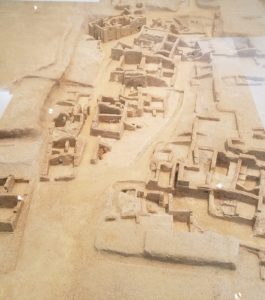
The excavation. The houses were all two or three stories.
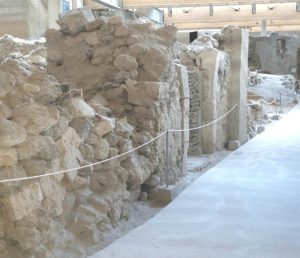
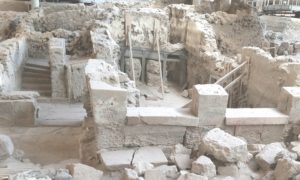

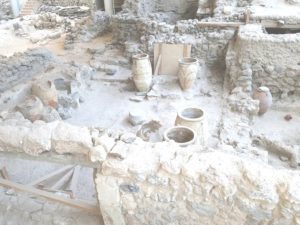
The town had a water distribution system. And bathtubs.
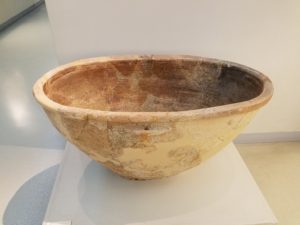
And a separate sanitary sewer system. Indoor toilets connected to the latter. If you open the cabinet below your washbasin you can see that the drain pipe has an S shaped bend. The gas trap, keeps odors from coming back up. They had a version built using stones on their toilet drains.
Furniture (plaster injected into a cavity in the ash where the wood hade vacated over the centuries)
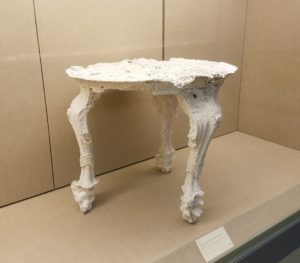
Their trading brought goods from all over the region.
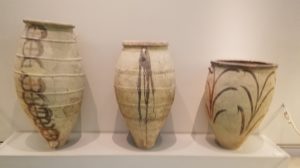
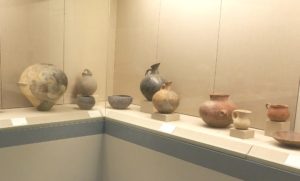
The walls of their homes were covered with paintings and designs.
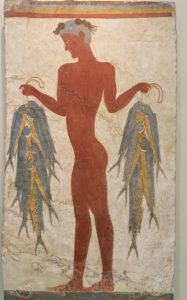
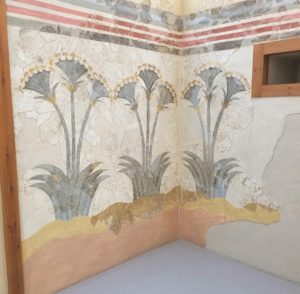

And, being a chef, I am enamored with their cooking tools.
They had the ancient method of clay pots that set directly into the fire.

But also a wide range of modern looking bronze tools.

They had wine, and cups we would recognize today.
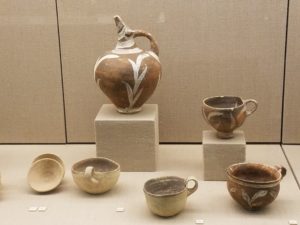
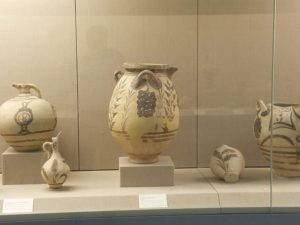
Neat little fire dogs to cook skewers.
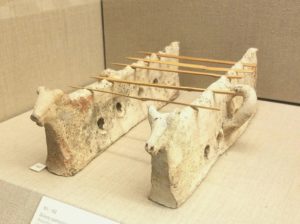
And small ovens for baking flat breads. What an intetesting dedign.
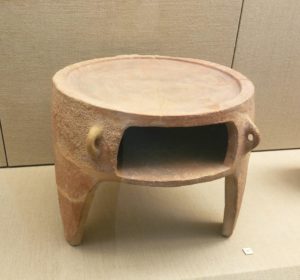
You have probably bailed by now, but the continuity of our lives, with people living recognizable lives so long ago is a special thing to think about for me.